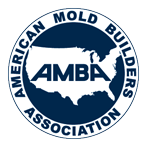By: Brent Borgerson
April 24, 2008
The thought of processing PEEK (polyetheretherketone) or other high-temp resins can send nervous tremors through many a molder’s body. I know, as a molder who learned the craft on a steady diet of PP and PE closures with their low melt temperatures and cold molds, my first PEEK experience made me edgy to say the least. But I’ve since come to realize that PEEK is just another thermoplastic resin and, like the others, can be molded safely and efficiently with just a few precautions.
PEEK is widely believed to be one of the highest performing thermoplastics on the market and its end properties more than justify any trials and tribulations you may encounter processing it. PEEK is a linear aromatic, semi-crystalline thermoplastic having excellent wear, chemical and hydrolysis resistance. It has very low flame/smoke toxicity and excellent electrical properties that preclude the need for additives in many cases.
PEEK processes at a high melt temperature nearing 720°F, and both the press barrel and controls must be capable of this. On many molding machines the high heat software is an option and I recommend ceramic high-temp heat bands whenever possible. A special screw and barrel are generally not needed, but consider hard units if running filled PEEK resins. We typically use sliding ring non-return valves, GP or Eliminator™ tips and don’t recommend ball checks or shutoff nozzles.
A hot mold is the key to achieving crystallinity in PEEK parts. Purging PEEK allows you to see the color change from a translucent to a solid colored crystalline state. If the mold is too “cold” (i.e. not hot enough) the parts will have that discoloration or partial translucency, and the quality of the end product will be compromised. The mold, in most cases, must be between 350°F and 450°F. This is steel temperature and requires oil or cartridge heat to maintain this level. Complex parts may require better temperature control so oil would be the preferred option. We also recommend the use of thermocouples to verify and monitor the steel temperature.
These molds must be specifically designed to run high-temp materials with draft, finish, undercuts and steel types all factored in from the beginning. Insulator plates between press platen and mold clamp plates are a must. The preferred steel type would depend on whether or not the resin uses any abrasive fillers but should have a minimum hardness of 52-54 Rc.
The resin also must be very dry to process well and achieve the desired end properties. This means that the resin must be at 0.02% moisture or below. We typically recommend drying the resin at 300°F for at least 3 hours. We also suggest the use of a moisture analyzer to assure dryness.
PEEK can be quite costly, but you should be able to use 30% dry first-pass regrind with unfilled PEEK and 10% with filled PEEK.
Safety should be a primary consideration when molding PEEK, both for purging and while working with the mold. Wear safety glasses and/or a face shield, Kevlar or Kevlar/stainless steel sleeves, and heavy cotton cloves when purging and reaching into the mold.
When preparing for your PEEK experience, research it well with your resin supplier. The above information is based on our experience, but it should used as a reference only. Also, make sure you don’t neglect recognized scientific principles when working with any thermoplastic material. With a bit of common molding sense, your PEEK experience can and should be a rewarding one.
Matrix Plastics Products processes PEEK for medical device applications, and also has a great deal of expertise in designing and building the molds for these programs.
_horizontal_white_536x129.png)

